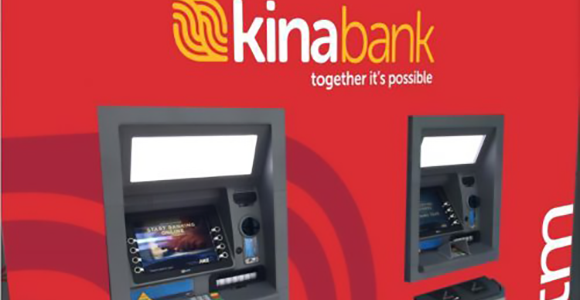Kina Bank’s operations have expanded dramatically after taking over ANZ’s retail operations in Papua New Guinea. In an exclusive interview, Chief Executive Officer Greg Pawson outlines to Business Advantage PNG its plans for growth. David James reports.
With its acquisition of ANZ’s retail banking operations in PNG complete, and a US$10 million investment from the Asian Development Bank (ADB) in place, Kina Bank is a very different-looking institution to a year ago, when Business Advantage PNG last sat down with CEO Greg Pawson.
The deposit base has more than doubled, and when the integration with ANZ was finalised, the number of its customers also rose from 25,000 on 22 September 2019, to 125,000 on 23 September.
‘It is a good example of the small bank taking on the bigger bank. This was one of the biggest and most complex transactions to have happened in PNG in recent years.’
Pawson says Kina’s purchase of a 15 per cent stake in microfinance institution MiBank will further expand Kina’s reach and help significantly expand financial inclusion services.
‘We have gone from the fourth biggest retail bank in PNG to the second biggest overnight.
‘If you look at our broader business model, there are 750,000 customers in our funds administration business and another 250,000 through the MiBank strategic partnership. We are reaching in excess of a million Papua New Guineans, which I think is pretty cool.’
Pawson says the aim for 2020 is to ‘continue that growth trajectory. Our agreement with the ADB further strengthens our international correspondent banking relationship, which will improve our position in FX. It will also improve our access to the PNG export and resources sector and it will enable us to continue our SME segment growth in accordance with the PNG government’s focus.’
Three advantages
Pawson points to three strategic advantages from the ANZ acquisition. ‘The first obviously was that we get a national footprint.’
Kina has increased from three branches to 17, and has gone from ‘a Port Moresby/Lae-centric bank’ to having a presence in all of PNG’s key provincial centres.
‘It was really important, because 80 per cent of the business done in this economy is done outside of Port Moresby and Lae, and we didn’t have access to that because we didn’t have a footprint.’
A second advantage is that the acquisition provided a rationale for Kina to bring forward a capital expenditure programme that was planned for the next five-to-10 years.
‘We would have eventually had to build a point-of-sale network, for example; we would have had to have been in a position to produce EMV chip debit and credit cards. The acquisition allowed us to bring these projects forward and this year we launched our chipped Visa Debit and Credit cards and the fastest eftpos terminals in the market, as well as a USSD platform and upgrades to our digital corporate and retail online banking platforms.’
‘Customers are attracted to our brand and, now that we have the ability to offer them every service that every other bank in PNG can – and more.’
The third advantage is that Kina got K3 billion in low cost deposits. ‘Much of that portfolio with ANZ is sitting in savings and cheque accounts and they are lucrative for any commercial bank because the way we make money is that we lend those cheque deposits to our loan customers.’
Economy
Pawson describes the PNG economy as ‘flat’, but he is forecasting revenue growth for the business of 20 per cent next year. About 20 to 30 per cent of that growth will come from new business, with the remainder coming from an increased market share.
‘Customers are attracted to our brand and, now that we have the ability to offer them every service that every other bank in PNG can – and more – that is opening a lot of doors for us as well. Our home loan portfolio has virtually doubled in size – it’s close to half a billion kina – and we are forecasting about 40 per cent growth on that portfolio this year.’
Digitisation
Digital banking is a key component of Kina’s growth strategy to become PNG’s leading digital bank. Pawson says the bank has digitalised a lot of its internal processes.
‘Close to 65 per cent of our customers are transacting with us digitally, whether it’s through an ATM, USSD or mobile banking. We also have a number of projects in development to expand our digital services for customers.’
Pawson says that the Coral Sea Cable System, which is scheduled for January 2020, will reduce the cost of data and make it easier for customers to access digital services.
‘The biggest thing for me is that the Government has to have a propensity to move away from cash and cheques and get the financial system on to e-commerce. We are encouraging customers to do that.’










Speak Your Mind